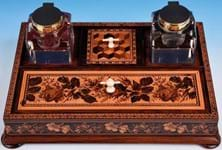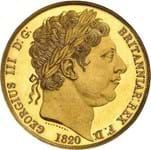They have nothing to do with winter, but rather take their name from the Viburnum plant with its hundreds of white petals.
The design was conceived by Meissen’s most accomplished designer, Johann Joachim Kaendler, in 1739.
The workshop records for that year contain the first reference to this pattern: a teapot which was followed by several jugs and bowls and subsequently by distinctive vases.
A feature of the latter was the extra decoration with birds and birds’ nests.
Such pieces were incredibly difficult to produce, as each of the hundreds, if not thousands of flower petals had to be applied individually and survive the firing without damage.
Schneeballen vases were highly desirable and the most prolific buyer was the Prussian king Frederick the Great, who amassed a collection of some 40 vases for his palace Sanssouci in Potsdam.
In the 19th century, the model came back into fashion and is still popular with today’s collectors, as can be seen by the result for a and survive the firing without damage.
Schneeballen vases were highly desirable and the most prolific buyer was the Prussian king Frederick the Great, who amassed a collection of some 40 vases for his palace Sanssouci in Potsdam.
Popular today
In the 19th century, the model came back into fashion and is still popular with today’s collectors, as can be seen by the result for a pair of 1ft 11in (59cm) high vases from c.1840, which came under the hammer at Historia (27% buyer’s premium) in Berlin in the auction of January 23-30.
On each of the vases the mass of flower heads was adorned with the figures of a parrot and an oriole, and near the base with a nest with two chicks; at one nest the young birds are being fed by an oriole, at the other a jay is performing her maternal duties.
With a guide of €5000, the vases were bound to attract considerable interest. Soon, it was a contest between an international dealer and a local collector.
With his closing offer of €45,000 (£38,460) the Berlin collector sealed the deal, saving the auction house the nightmare of sending such a piece abroad.
£1 = €1.17















